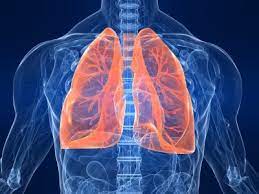In a groundbreaking revelation poised to redefine our comprehension of exercise’s impact on the body, a consortium of scientific luminaries has unveiled a comprehensive exploration of the molecular transformations ignited by physical activity. The study, a part of the Molecular Transducers of Physical Activity Consortium (MoTrPAC), has illuminated an intricate web of cellular responses across 19 organs, reshaping our understanding of exercise’s profound effects beyond muscular and cardiovascular realms.
Heralded as a milestone in exercise science, the research, led by experts from eminent institutions including the Broad Institute of MIT and Harvard, Stanford University, and the National Institutes of Health, transcends conventional paradigms. Steve Carr, the visionary behind MoTrPAC, underscored the collaborative effort, emphasizing the necessity of integrating diverse scientific disciplines to forge a holistic understanding.
“Our findings transcend the traditional boundaries of exercise physiology, delving deep into the molecular fabric of organ-level adaptations,” remarked Carr, reflecting on the magnitude of the study’s implications.
The investigation, documented in the prestigious journal Nature, underscores the expansive reach of exercise-induced molecular changes, spanning organs as diverse as the heart, brain, and lungs. Beyond the realms of traditional health benefits, the study unravels novel insights into immune regulation, stress response modulation, and pathways pertinent to chronic ailments such as inflammatory liver disease and cardiovascular disorders.
Clary Clish, one of the lead researchers, elucidated the herculean endeavor behind the study, involving meticulous coordination across laboratories to execute nearly 10,000 assays and analyze a staggering 15 million measurements. Such meticulous scrutiny revealed a panoramic vista of molecular alterations, with particular emphasis on the adrenal gland’s pivotal role in orchestrating immunity, metabolism, and blood pressure regulation.
Of paramount significance is the delineation of sex-specific nuances in immune response dynamics, illuminating the disparate temporal trajectories observed in males and females. This revelation not only underscores the imperative of tailored approaches but also hints at a paradigm shift in personalized health interventions.
Moreover, the study heralds a new era of therapeutic prospects, envisaging tailored exercise regimens informed by individual health profiles and innovative treatments for conditions like non-alcoholic fatty liver disease. The data, meticulously curated and disseminated through an online repository, beckon forth a wave of further exploration, promising to catalyze a cascade of transformative discoveries in the realm of human health and wellness.
As the scientific community pivots towards deciphering the intricate molecular symphony of exercise, this seminal study stands as a beacon of enlightenment, illuminating pathways to a future where personalized health interventions and targeted therapies reign supreme. With its profound implications reverberating across disciplines, the study epitomizes a testament to the indomitable spirit of scientific inquiry, propelling humanity towards a healthier, more resilient future.












